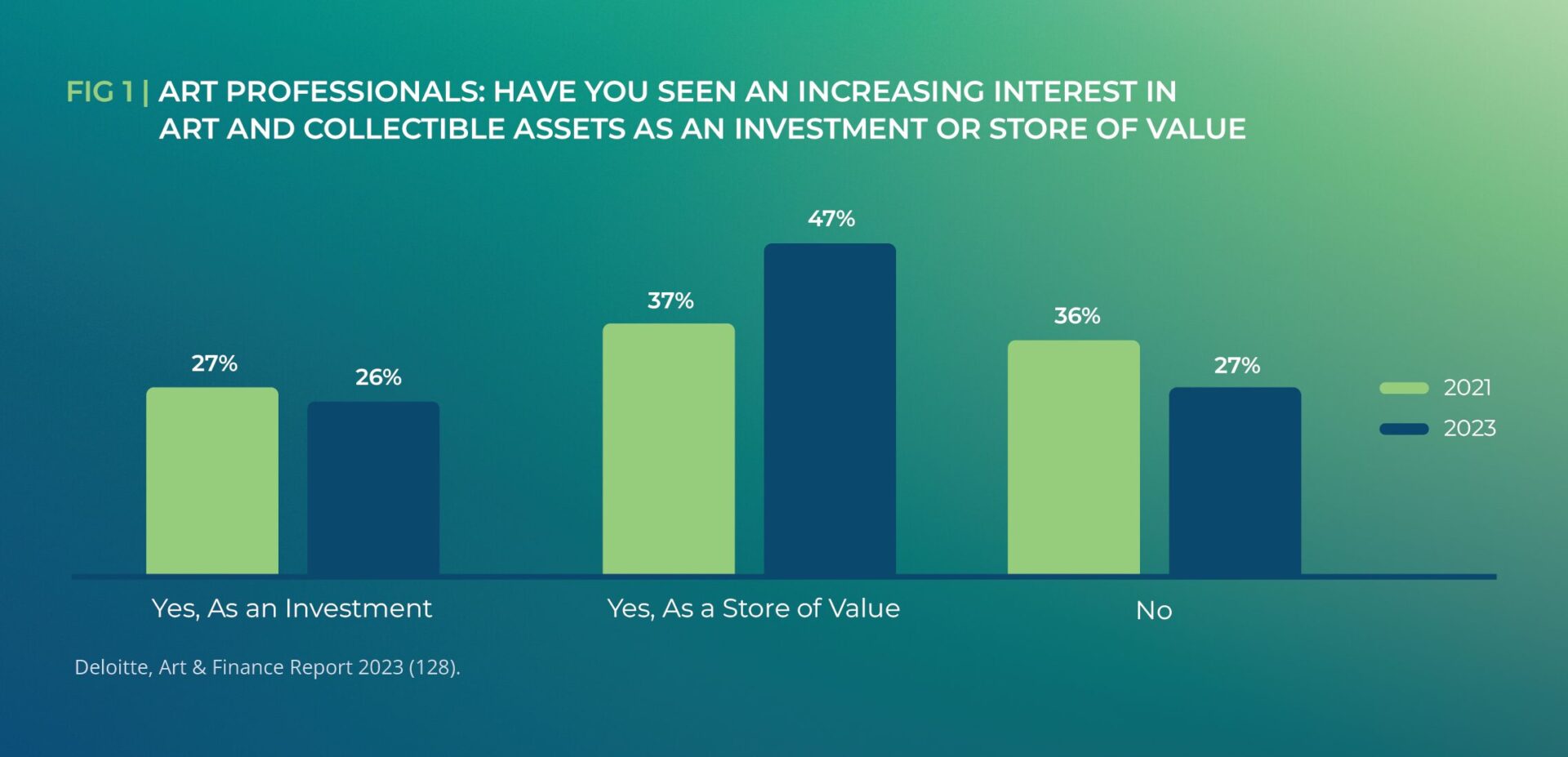From Canvas to Capital: Positioning Art in a Comprehensive Wealth Strategy
What is From Canvas to Capital?
From Canvas to Capital is Clearstead’s perspective on how fine art is becoming a meaningful component of modern wealth planning. It explains how art functions within a holistic financial strategy and outlines the market forces shaping global demand.
How has fine art evolved into a strategic part of wealth planning?
Fine art is shifting from being viewed purely as a passion purchase to becoming a deliberate part of wealth strategy. Investors consider art for:
- Store-of-value qualities that help protect wealth
- Portfolio diversification due to low correlation with traditional markets
- Legacy and estate planning, including intergenerational transfers
- Lifestyle and identity expression aligned with personal financial values
Key Data Point:
Between 2021 and 2023, the share of art held primarily for wealth preservation increased from 37% to 47%, highlighting its growing role as a financial stabilizer.¹

Why are younger and ultra-high-net-worth investors viewing art as a long-term asset?
Younger and UHNW investors are increasingly integrating art into their long-term planning because it combines meaning, culture, and financial resilience. Many view art as:
- A tangible, scarce asset that can hold value across market cycles
- A way to build legacy and personal identity within a portfolio
- A complement to traditional and private-market investments
- A way to diversify risk during economic uncertainty
Market Snapshot:
Globally, art and collectibles are valued at over $2 trillion on the balance sheets of ultra-high-net-worth individuals.²
What trends are shaping the global art and collectibles market?
Key structural shifts are fueling growth and investor engagement:
- Rising global wealth and expanding UHNW populations
- Increasing digitization of auctions and art platforms
- Greater transparency around pricing, provenance, and market data
- Broader participation across contemporary art, design, and collectibles
- Cross-border bidding and globalized auction cycles
U.S. Market Data:
The U.S. art market generated $4.3 billion in auction sales in 2024, reaffirming its position as a major global market hub.³
How does art support diversification and stability?
Art behaves differently than stocks and bonds, which can reduce portfolio volatility. Art may help:
- Hedge against market downturns
- Preserve value during economic instability
- Complement alternative and private investments
- Provide steady long-term appreciation
Diversification Data:
During early 2022–2023:
- Fine art values rose 4.2%³
- The S&P 500 fell 6.6%³
This divergence highlights art’s potential to act as a hedge against public-market volatility.
How are collectors integrating art into legacy, liquidity, and lifestyle planning?
Collectors increasingly evaluate art through a broader wealth-planning lens. Art is used to:
- Support legacy conversations with family members
- Shape estate, gifting, and philanthropic strategies
- Inform liquidity timing based on market cycles and auction trends
- Align wealth decisions with personal interests and lifestyle priorities
Our Resource on Incorporating Art into Your Wealth Plan
To help explain the way that art and collectibles can be incorporated into wealth planning, we’ve created a guide covering these nuances. Download our whitepaper, From Canvas to Capital: Positioning Art in a Comprehensive Wealth Strategy, to read more about trends in art collecting and financial planning considerations.
Inside, you’ll find information about key factors investors should consider before incorporating art into a wealth plan:
- How fine art has evolved into a strategic component of modern wealth planning
- Why younger and ultra-high net worth investors are increasingly viewing art as a meaningful, long-term asset
- The trends and structural shifts fueling the expansion of the global art and collectibles market
- How collectors are integrating art into broader decisions around legacy, liquidity, and lifestyle
—————-
Sources:
- Deloitte, Art & Finance Report 2023
- Morgan Stanley Wealth Management, “Reviewing Art as an Asset Class,” 2025
- Artnet, “The Intelligence Report: The Year Ahead, 2025.”
Disclosures: The information provided is general in nature, is provided for informational purposes only, and should not be construed as financial, tax, or legal advice. The views expressed by the author are based upon the data available at the time the article was written. Any such views are subject to change at any time. Clearstead disclaims any liability for any direct or incidental loss incurred by applying any of the information in this article. All financial decisions must be evaluated as to whether it is consistent with your objectives and financial situation. You should consult with a financial, tax or legal professional before making any decisions.